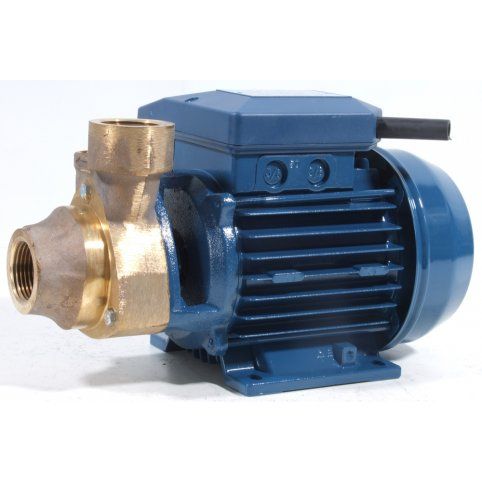Pentax PM45 Peripheral Turbine Pump - 40 L/min

Specification
| Weight - kg | 6.2 |
|---|---|
| Length - mm | 265 |
| Width - mm | 125 |
| Height - mm | 155 |
| WRAS Approved | No |
| Float Switch | No |
Details
The Pentax PM45 is a peripheral turbine pump made to develop high pressure with limited flow rates. The pump is suitable for clean water only and can be used for many duties including water boosting, sprinkler systems and irrigation, water circulation and transfer.
- Centrifugal impeller, peripheral turbine
- Brass impeller and pump housing
- Available in 110v and 230v
- 230v 50Hz
- 0.37Kw
- 40 L/Min maximum flow
- 40 Metres maximum head
- 6 Metres maximum suction if used with a filter foot valve (Not self-priming)
- 1” BSP Female inlet and outlet
- Maximum liquid temperature of 70°c
Specification
| Model | KG | H x W x L (mm) | L/Min | Max. Head | kW |
| Pentax PM45 110v | 6.2 | 155 x 125 x 265 | 40 | 40m | 0.37 |
| Pentax PM45 230v | 6.2 | 155 x 125 x 265 | 40 | 40m | 0.37 |
What is a Peripheral Turbine Pump?
A peripheral turbine pump is also commonly referred to as a regenerative turbine pump. The primary difference between a centrifugal and turbine pump is that fluid only travels through a centrifugal impeller once, whereas in a turbine pump, it takes many trips through the vanes. Once the liquid enters the pump, it is directed into the vanes which push the fluid forward and impart a centrifugal force outward to the impeller periphery. An orderly circulatory flow is therefore imposed by the impeller vane which creates fluid velocity. Fluid velocity (or kinetic energy) is then available for conversion to flow and pressure depending on the external systems flow resistance.
Next, as the circulatory flow is imposed on the fluid and it reaches the fluid channel periphery, it is then redirected by the specially shaped fluid channels around the side of the impeller and back into the I.D of the turbine impeller vanes, where the process begins again. This cycle occurs many times as the fluid passes through the pump. Each trip through the vanes generates more fluid velocity, which can then be converted into more pressure. The overall result of this process is a pump with pressure building capability up to ten times more than that of a centrifugal pump with the same impeller diameter and speed.
These pumps are suitable for use only in applications with clean fluids and systems. In some cases, a suction strainer can be used to protect the pump.
